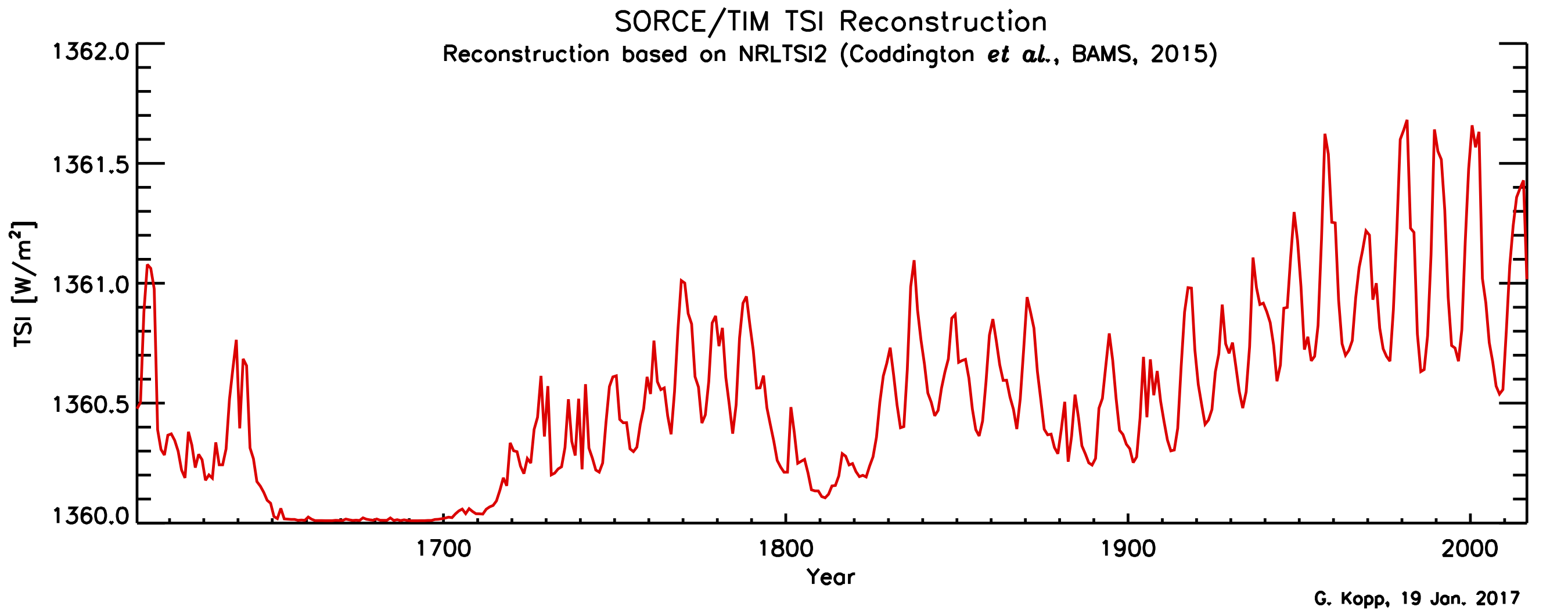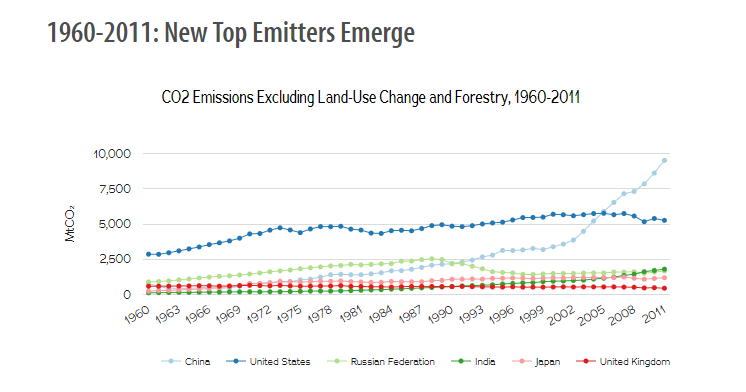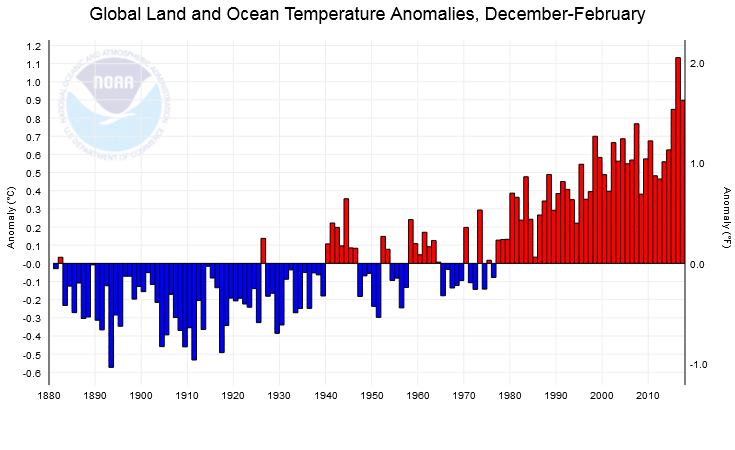It looks like you're using an Ad Blocker.
Please white-list or disable AboveTopSecret.com in your ad-blocking tool.
Thank you.
Some features of ATS will be disabled while you continue to use an ad-blocker.
share:
a reply to: Phage
Harvard Center for Astrophysics
soooo, the consequences of greenhouse gases and solar variability are not readily separated, interesting.... but I know for a fact that you know for sure even though these are astrophysicist and aerospace engineers. What do they know though right?
I put the important part in bold for you in case you miss it.
sound familiar???
don't worry the entire scientific community has settled on climate change and humans are the only variable
Harvard Center for Astrophysics
At the same time, the superposition of the two effects, of accumulating greenhouse gases and the brighter more active Sun, has rendered the scientific problem of studying either aspect much more difficult. The consequences of greenhouse gases and solar variability are not readily separated
soooo, the consequences of greenhouse gases and solar variability are not readily separated, interesting.... but I know for a fact that you know for sure even though these are astrophysicist and aerospace engineers. What do they know though right?
Maunder's point was conveniently ignored or even denied, because no one knew what it meant. Fortunately Jack Eddy took up the historical investigation about 30 years ago and turned up enough old records that the reality of the "Maunder Minimum" was established beyond any reasonable doubt. Subsequent historical research has unearthed detailed systematic records of sunspot numbers which show how peculiar the behavior of the Sun was during that time. Then with modern data on the atmospheric production rate of carbon 14 by cosmic rays, Eddy went on to show that such prolonged periods of solar inactivity have occurred ten times in the last 7000 years. So we may anticipate that there will be yet another Maunder Minima in the future. Finally Eddy showed that the mean annual temperature in the Northern Temperate Zone exhibits a remarkable tendency to track the general level of solar activity
I put the important part in bold for you in case you miss it.
2 There were violent storms and cold weather that appeared not to have been part of people’s forebears’ memories. And not everywhere, at once, at all times, across the Northern Hemisphere. There were droughts that could desiccate nearly immobile agronomic peoples – which was what most of the world’s population then was –in the Northern Hemisphere, at least. There was a disappearance or diminution of the mild weather that had seen the start of Medieval Viking colonies across the North Atlantic - some colonies ceasing to exist.33 Droughts, very unusual snows, weird cyclonic activity in the Northern and even Southern Hemispheres and unusually violent volcanic eruptions were often observed and suffered through.
sound familiar???
Though this matter is not the focus of our book the issue of natural global warming by solar and purely geothermic means must meet with the concern of CO2-global warming produced by humans. This natural global warming, among other issues, is about how the Sun can affect Earth by linking to a subset of planetary warming/cooling processes and as such, it cannot and should not be ignored. That men and nature are contributing to the recent climate and ecosystem change is no secret, but the fear of global warming engendered by the unknown is also great.
But it has also been noted that this mean world-wide temperature has increased since 1850, before coal and fossil fuels became heavy factors for the attendant increases in carbon dioxide (CO2) of about 25% in Earth’s atmosphere. Accounting for other minor greenhouse gases,2 the numerical estimate of the total human forcing on climate now rises to a “radiative equivalent” of a 50% increase in CO2 alone or about a global forcing of 2.5 W/m2 over the last 100-150 years or so. This enhanced human factor is riding on top of our Sun’s powerful radiance which put out about 1370 W/m2 at Earth’s orbital distance of 1 a.u.
That world-wide-mean temperature, however, did not rise steadily. Statistical temperature analyses since 1850 reveal year-to-year and decade-to-decade temperature change patterns.3 Longer-term climate records (although with increasingly less area coverage as the records lengthen) hint that Earth’s surface temperatures could have been on the overall upswing since the late 1600s
don't worry the entire scientific community has settled on climate change and humans are the only variable
a reply to: toysforadults
No. Climatologists don't think that humans are the only variable which affects climate. But it does seem to be the main thing at play at the moment.
Your source:
The thing is, the Sun isn't getting brighter, hasn't been for 50 years or so (a bit dimmer, actually). But it did increase in brightness a bit (about 0.1%) in the first half of the last century. That had some effect, probably.

don't worry the entire scientific community has settled on climate change and humans are the only variable
No. Climatologists don't think that humans are the only variable which affects climate. But it does seem to be the main thing at play at the moment.
Your source:
The two major drivers appear to be the varying brightness of the Sun and, of course, the accumulating greenhouse gases.
The thing is, the Sun isn't getting brighter, hasn't been for 50 years or so (a bit dimmer, actually). But it did increase in brightness a bit (about 0.1%) in the first half of the last century. That had some effect, probably.

edit on 11/13/2018 by Phage because: (no reason given)
a reply to: toysforadults
Post what? I think that's the first time I've posted the TSI chart.
Oh, you think its the sunspot count chart. No. It isn't. Look closer. It's a chart showing the brightness of the Sun.
Your source:
you have post that at least a dozen times,
Post what? I think that's the first time I've posted the TSI chart.
Oh, you think its the sunspot count chart. No. It isn't. Look closer. It's a chart showing the brightness of the Sun.
Your source:
The two major drivers appear to be the varying brightness of the Sun and, of course, the accumulating greenhouse gases.
edit on
11/13/2018 by Phage because: (no reason given)
Winters are getting longer? It appears California, at least, didn't get the message .....
How climate change is 'shrinking winter'
How climate change is 'shrinking winter'
Snowy mountain winters are being "squeezed" by climate change, according to scientists in California. Researchers who studied the winter snowfall in the mountains there revealed that rising temperatures are reducing the period during which snow is on the ground in the mountains
originally posted by: Phage
The thing is, the Sun isn't getting brighter, hasn't been for 50 years or so (a bit dimmer, actually). But it did increase in brightness a bit (about 0.1%) in the first half of the last century. That had some effect, probably.
Looks like it might be starting a downward trend again.
a reply to: verschickter
i live in the north west England and the summers here are very short and not very warm , the winters that seem to last forever with not much snow but very wet . i am now 70 years old but i remember the summers being long and warm when i was a child and well into my teens
i live in the north west England and the summers here are very short and not very warm , the winters that seem to last forever with not much snow but very wet . i am now 70 years old but i remember the summers being long and warm when i was a child and well into my teens
originally posted by: Phage
It is interesting the rise in temperatures aligns with a massive increase in China's CO2 production starting in the 1980s as the rest of the world stays somewhat the same. I'm sure the carbon tax in OR will save us though.

edit on 13-12-2018 by Xtrozero because: (no reason given)
Dont worry, mother earth going through one huge inversion process right now. Move to the mountains and see for yourself. You can bet it's going to
take something very big to reverse it. And it will. Just hope that your not around to see it!
Lightmeup04
Lightmeup04
new topics
-
How we've changed in 100 years
Ancient & Lost Civilizations: 2 hours ago -
US disburses $3.4 billion in budget aid for Ukraine, Yellen says
US Political Madness: 3 hours ago -
Nigel Farage's New Year Message.
Politicians & People: 5 hours ago -
I dont understand what i just witnessed
Social Issues and Civil Unrest: 6 hours ago -
The Silent Motion…
Short Stories: 9 hours ago -
Happy New Year from Aussie
General Chit Chat: 9 hours ago -
House republicans prove to be drama queens
US Political Madness: 10 hours ago
top topics
-
Strange fog all over the northern hemisphere
General Conspiracies: 17 hours ago, 13 flags -
I dont understand what i just witnessed
Social Issues and Civil Unrest: 6 hours ago, 11 flags -
Happy New Year from Aussie
General Chit Chat: 9 hours ago, 7 flags -
US disburses $3.4 billion in budget aid for Ukraine, Yellen says
US Political Madness: 3 hours ago, 7 flags -
Nigel Farage's New Year Message.
Politicians & People: 5 hours ago, 6 flags -
House republicans prove to be drama queens
US Political Madness: 10 hours ago, 5 flags -
The Silent Motion…
Short Stories: 9 hours ago, 5 flags -
How we've changed in 100 years
Ancient & Lost Civilizations: 2 hours ago, 3 flags
active topics
-
I dont understand what i just witnessed
Social Issues and Civil Unrest • 17 • : 38181 -
Strange fog all over the northern hemisphere
General Conspiracies • 33 • : tarantulabite1 -
How we've changed in 100 years
Ancient & Lost Civilizations • 6 • : VariedcodeSole -
US disburses $3.4 billion in budget aid for Ukraine, Yellen says
US Political Madness • 14 • : VariedcodeSole -
Why Such An Uproar Over Non-US Citizens With H1-B Work Visas.
Social Issues and Civil Unrest • 159 • : matafuchs -
Imagine how it feels
US Political Madness • 27 • : Xtrozero -
The C.D.C. Says There Was NO INFLUENZA Worth Reporting for the 2020-2021 Flu Season.
Diseases and Pandemics • 52 • : rickymouse -
New World Order Coming?
New World Order • 29 • : BeyondKnowledge3 -
Mood Music Part VI
Music • 3772 • : Hellmutt -
Elon Musk futurist?
Dreams & Predictions • 35 • : fringeofthefringe

